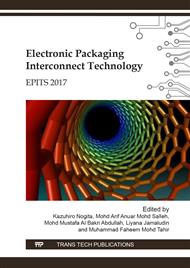[1]
Bell, A. T. (1999), NMR applied to zeolite synthesis,, Colloids and Surfaces, 158, 221-234.
Google Scholar
[2]
Ray, N. H. (1978), Inorganic Polymers, Academic Press, London.
Google Scholar
[3]
Hos, J.P., McCormick, P. G. & Byrne, L. T. (2002), Investigation of a synthetic aluminosilicate inorganic polymer,, Journal of Materials Science, 37, 2311-2316.
Google Scholar
[4]
van Jaarsveld, J. G. S., van Deventer, J. S. J. & Lorenzen, L. (1997), The potential use of geopolymeric materials to immobilise toxic metals: Part I. Theory and applications,, Minerals Engineering, 10, (7), 659-669.
DOI: 10.1016/s0892-6875(97)00046-0
Google Scholar
[5]
Davidovits, J. (1999), Chemistry of geopolymeric system, terminology" Geopolymere ,99, Saint-Quentine, France, 9-39.
Google Scholar
[6]
Davidovits, J. (1991), Geopolymers:Inorganic Polymeric New Materials,, Journal of Thermal Analysis, 37, 1633-1656.
DOI: 10.1007/bf01912193
Google Scholar
[7]
Subaer, Haris, A., Nurhayati, Irhamsyah, A., Januarti Jaya Ekaputri, J.J., 2016, The Influence of Si:Al and Na:Al On The Physical and Microstructure Characters of Geopolymers Based on Metakaolin, Materials Science Forum Vol. 841 (2016) pp.170-177.
DOI: 10.4028/www.scientific.net/msf.841.170
Google Scholar
[8]
Temuujin, J., van Riessen, A., MacKenzie, K.J.D., 2010, Preparation and characterisation of fly ash based geopolymer mortars, Construction and Building Materials, 24, 1906–(1910).
DOI: 10.1016/j.conbuildmat.2010.04.012
Google Scholar
[9]
Eun Oh, J., Monteiro, P.J.M., Sun Jun, S., Choi, S., Clark, S.M., 2010, The evolution of strength and crystalline phases for alkali-activated ground blast furnace slag and fly ash-based geopolymers, Cement and Concrete Research 40, 189–196.
DOI: 10.1016/j.cemconres.2009.10.010
Google Scholar
[10]
Chen, L., Wang, Z., Wang, Y., and Feng, J., 2016, Preparation and Properties of Alkali Activated Metakaolin-Based Geopolymer, Materials 2016, 9, 767.
DOI: 10.3390/ma9090767
Google Scholar
[11]
DeSilva, P. & Sagoe-Crensti, K. (2008), Medium-term phase stability of Na2O–Al2O3–SiO2–H2O geopolymer systems,, Cement & Concrete Research, 38, (6), 870-876.
DOI: 10.1016/j.cemconres.2007.10.003
Google Scholar
[12]
Takeda, H., Hashimoto, S, Yokoyama, H., Honda, S. & Iwamoto, Y. (2013), Characterization of Zeolite in Zeolite-Geopolymer Hybrid Bulk Materials Derived from Kaolinitic Clays,, Materials, 6, (5), 1767-1778.
DOI: 10.3390/ma6051767
Google Scholar
[13]
Chandrasekhar, S. & Pramada, P. N. (2001), Sintering behaviour of calcium exhanged low silica zeolites synthesised from kaolin,, Ceramics International, 27, 105 – 114.
DOI: 10.1016/s0272-8842(00)00049-3
Google Scholar
[14]
Davidovits, J. (1988), Geopolymers of the first generation:SILIFACE-Process," Geopolymer ,88, First European Conference on Soft Mineralogy, Compiegne, France,49-67.
Google Scholar
[15]
Rowles, M. & O'Connor, B. H. (2003), Chemical optimisation of the compressive strength of aluminosilicate geopolymers synthesised by sodium silicate activation of metakaolinite,, Journal of materials chemistry, 13, (13), 1-6.
DOI: 10.1039/b212629j
Google Scholar
[16]
Grutzeck, M., Kwan, S. & DiCola, M. (2004), Zeolite formation in alkali-activated cementitious systems,, Cement & Concrete Research, 32, 949-955.
DOI: 10.1016/j.cemconres.2003.11.003
Google Scholar
[17]
Akolekar, D., Chaffee, A. & Howe, R. F. (1997), The transformation of kaolin to low-silica X zeolite,, Zeolites, 19, 359 - 365.
DOI: 10.1016/s0144-2449(97)00132-2
Google Scholar
[18]
Wei, S., Yun-sheng, Z., Wei, L. & Zhi-yong, L. (2003), In situ monitoring of the hydration process of K-PS geopolymer cement with ESEM,, Cement & Concrete Research, 34, (6), 935-940.
DOI: 10.1016/j.cemconres.2003.10.026
Google Scholar


